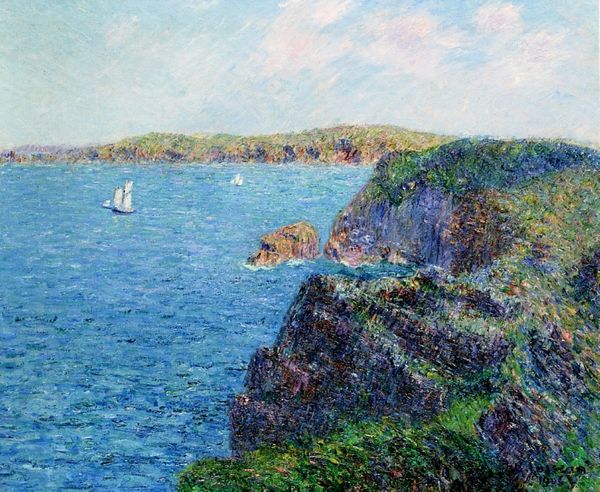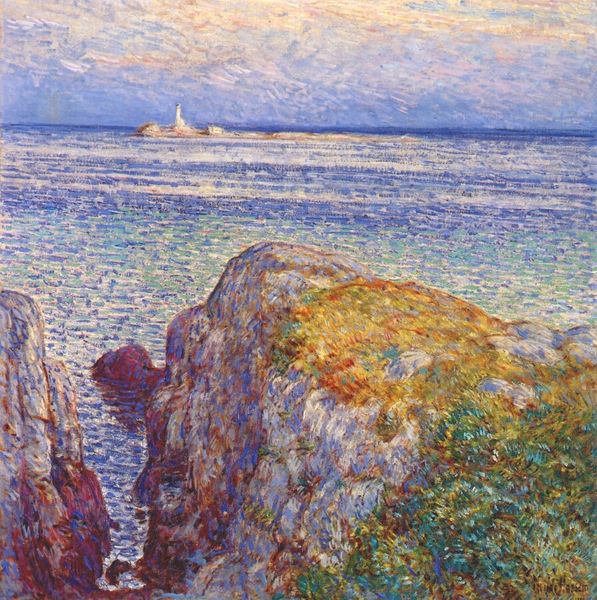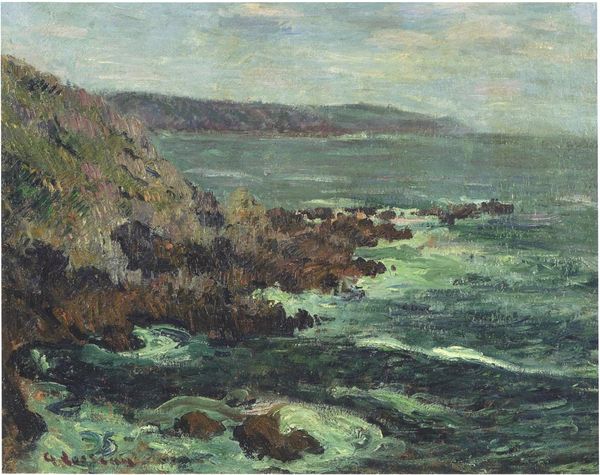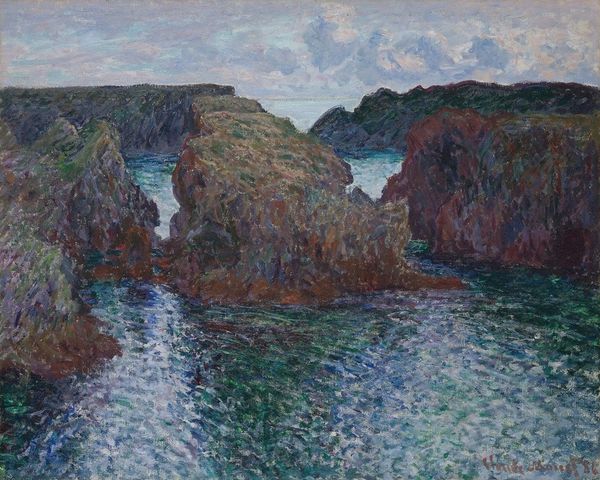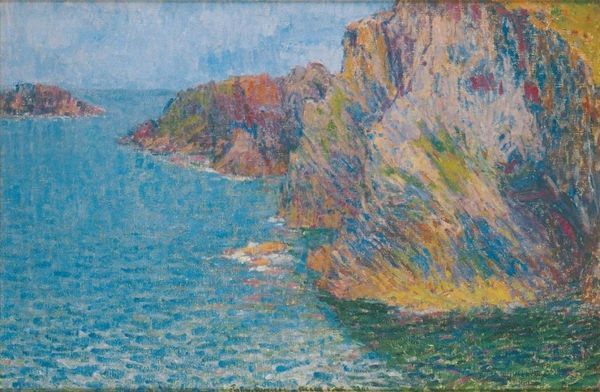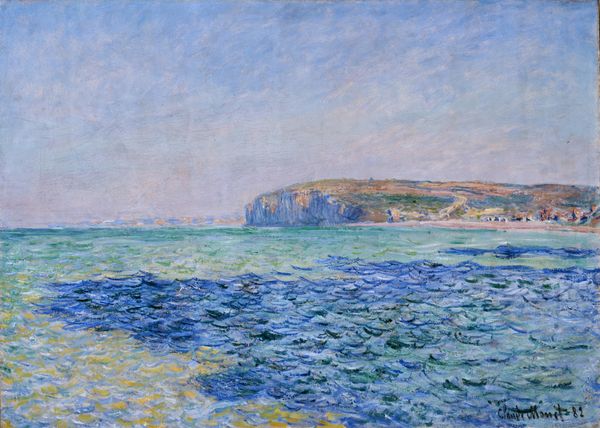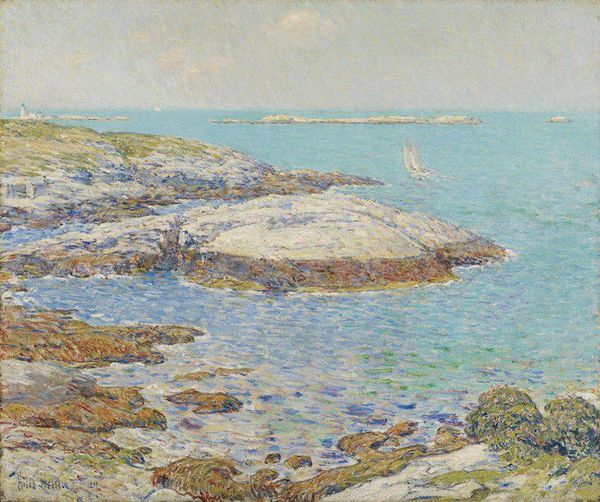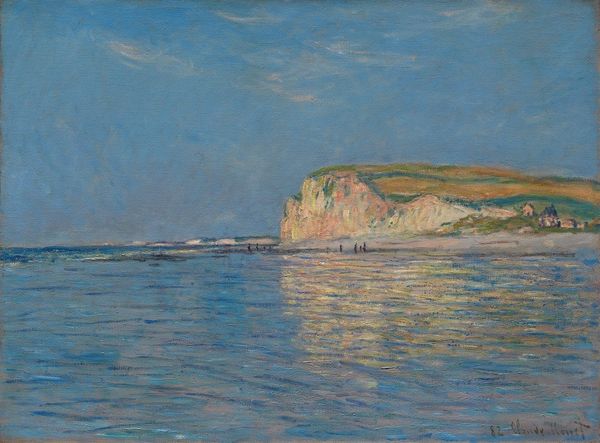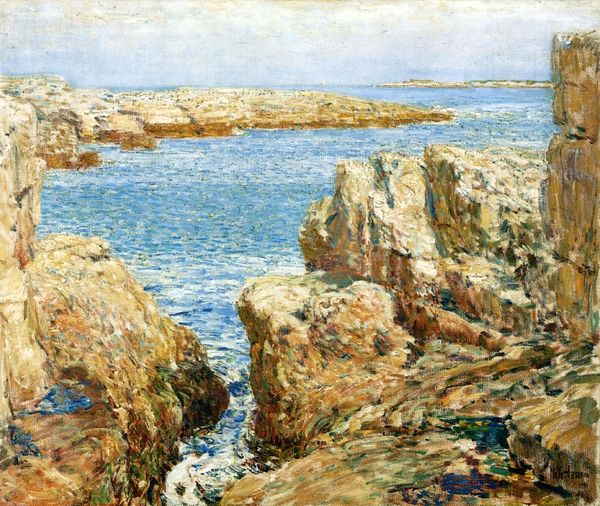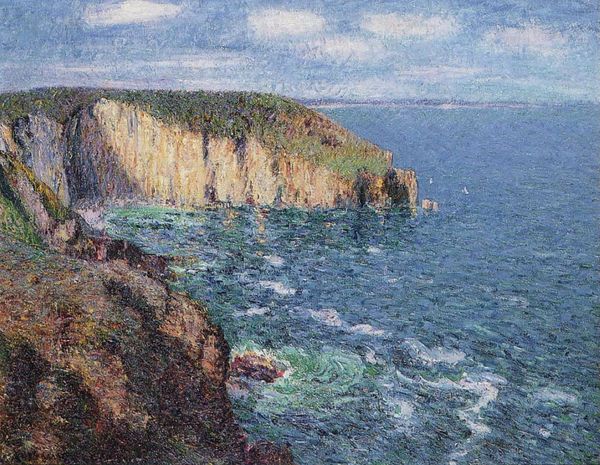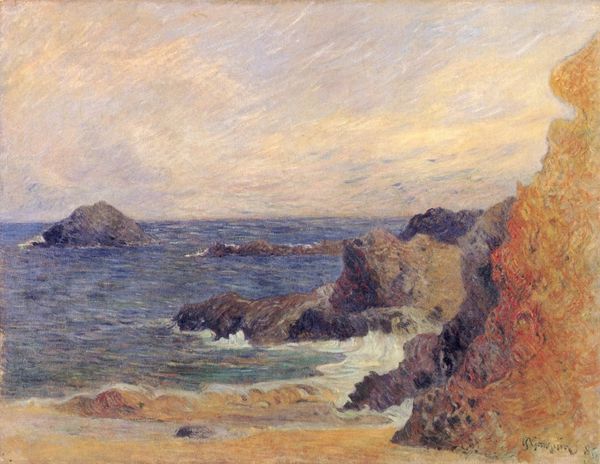
Copyright: Public domain
Curator: Gustave Loiseau's "Cap Frehel," painted in 1902. It's a stunning example of his plein-air Impressionist style, wouldn’t you say? Editor: Yes, it hits you immediately with that expansive view. The cliffs seem to jut right out of the canvas, imposing in a surprisingly quiet way. I love the brushwork, but I find the palette very muted. Almost melancholy? Curator: Indeed. It's tempting to examine how the Impressionists, and Loiseau in particular, depicted sites of natural labor such as this, but also, we should keep in mind the impact of industrial practices in painting, namely the mass production and accessibility of oil paints during the period. These technological developments certainly supported his artistic choices of capturing seascapes. Editor: Absolutely, and placing Loiseau within the context of other Breton artists who explored the region opens avenues to considering how these landscapes figured in colonial imaginaries. We should acknowledge the ways landscape painting is enmeshed with issues of power and representation. Were the working people of Cap Frehel rendered visible through paintings like this, or further marginalized through romantic depictions of the coastline? Curator: Good point. Shifting our attention to process, consider how Loiseau constructs the cliffs using dabs and strokes of varying color—it gives the impression of rugged texture. And that application! Oil paint thickly layered to mimic the feel of stone. One almost wants to touch it. Editor: That materiality underscores its complex history. This work speaks not only to individual artistry but also the ways cultural and historical forces shape both subject matter and its reception. Considering the socio-political realities against the picturesque aesthetic, we understand why many contemporary scholars seek to deconstruct landscape’s seeming innocence. Curator: So in a sense, appreciating Loiseau here might compel one to reflect on both labor history and Impressionist innovation in the painting. How each complements—and complicates—the other. Editor: Precisely! The interplay of material reality and broader socio-political narratives gives "Cap Frehel" a truly multifaceted resonance. It offers space for considering colonialism, impressionism and contemporary culture’s place within their complex overlap.
Comments
No comments
Be the first to comment and join the conversation on the ultimate creative platform.
